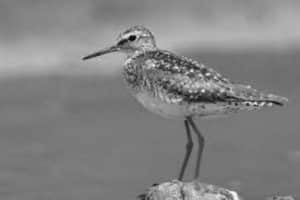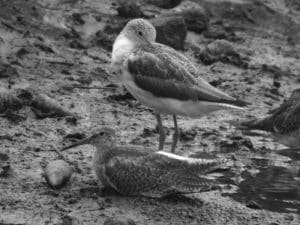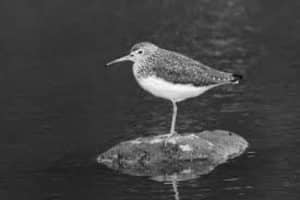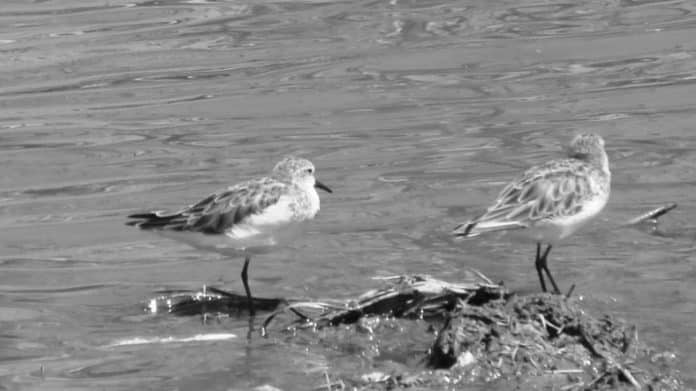Introduction to Tanzania’s Shoreline Ecosystem
Tanzania’s shoreline is a haven for a diverse range of wildlife, including an array of avian species. Among these fascinating birds are sandpipers and their allies in Tanzania, which play a crucial role in the ecosystem. The shoreline stretches along the eastern coast of Tanzania, encompassing picturesque beaches, mangrove forests, and estuaries teeming with life. This article will delve into the world of sandpipers and their allies, shedding light on their migration patterns, unique behaviors, and the importance of conservation efforts to protect these remarkable birds. Join us as we explore the shoreline symphony of Tanzania and discover the beauty and significance of sandpipers and their allies.
Overview of Sandpipers and Their Allies

Sandpipers and their allies belong to the family Scolopacidae, a diverse group of birds known for their slender bodies, long bills, and remarkable adaptability to different environments. These birds are well-suited for life on the shoreline, where they forage for food amidst the ebb and flow of the tides. Sandpipers, plovers, and godwits are some of the species that fall under this category. With their intricate plumage and distinctive calls, they add vibrancy to Tanzania’s coastal landscapes. These birds are not only visually captivating but also contribute to the delicate balance of the shoreline ecosystem.
Migration Patterns of Sandpipers and Their Allies
Sandpipers and their allies are renowned for their incredible migratory journeys, spanning thousands of miles each year. These birds breed in the Arctic and sub-Arctic regions during the summer months, taking advantage of the abundant food resources in these areas. As winter approaches, they embark on long-distance flights to their wintering grounds in warmer climates. Tanzania’s shoreline serves as a critical stopover point along their migratory routes. The nutrient-rich mudflats and sandy beaches provide ample food sources for these birds, allowing them to refuel and rest before continuing their journey. Witnessing these migratory gatherings is a spectacle that leaves birdwatchers in awe of nature’s wonders.
Tanzania’s Shoreline as a Habitat for Sandpipers and Their Allies
Tanzania’s shoreline offers a diverse range of habitats that cater to the needs of sandpipers and their allies. From expansive sandy beaches to lush mangrove forests and estuaries, each ecosystem provides unique opportunities for these birds to thrive. The mudflats, in particular, are a crucial feeding ground, hosting an abundance of invertebrates that serve as a vital food source for sandpipers and their allies. The intertidal zones, where the land meets the sea, are the perfect hunting grounds for these birds, allowing them to probe the sand and mud for worms, crustaceans, and other small prey. The pristine nature of Tanzania’s shoreline provides an ideal sanctuary for these avian wonders.
Unique Behaviors and Characteristics of Sandpipers and Their Allies

Sandpipers and their allies exhibit fascinating behaviors and possess unique characteristics that set them apart from other bird species. One remarkable trait is their ability to detect prey beneath the sand or mud. With their sensitive bills, they can locate and capture hidden invertebrates, showcasing their remarkable adaptability and specialized feeding techniques. Another intriguing behavior is their synchronized flocking patterns, where hundreds or even thousands of birds move in unison, creating mesmerizing choreography in the sky. These displays are not only breathtaking to witness but also serve as a means of protection against predators.
Conservation Efforts for Sandpipers and Their Allies in Tanzania
Recognizing the importance of sandpipers and their allies in maintaining the ecological balance of Tanzania’s shoreline, conservation efforts have been implemented to protect these birds and their habitats. Organizations such as the Tanzania Bird Atlas Project and the Tanzania Wildlife Research Institute work tirelessly to monitor populations, study migration patterns, and raise awareness about the significance of these avian species. It is crucial to maintain the integrity of the shoreline ecosystems and ensure the availability of food sources for these birds. By supporting these conservation initiatives, we can contribute to the preservation of Tanzania’s shoreline symphony.
Best Places to Observe Sandpipers and Their Allies in Tanzania
For birdwatchers and nature enthusiasts, Tanzania’s shoreline offers a wealth of opportunities to observe sandpipers and their allies in their natural habitat. Saadani National Park, located on the northern coast of Tanzania, is a prime destination for witnessing the beauty of these birds. The park’s unique blend of coastal and terrestrial ecosystems provides an ideal setting for observing a wide variety of avian species, including sandpipers, plovers, and godwits. Other notable locations include the Rufiji Delta and the Kilwa District, where vast wetlands and estuaries attract an abundance of birdlife. These areas offer a chance to witness the shoreline symphony up close and personal.
Tips for Photographing Sandpipers and Their Allies in Their Natural Habitat
Capturing the elegance of sandpipers and their allies through photography requires patience, skill, and an understanding of their behaviors. Here are a few tips to enhance your experience and capture stunning images:
- Research and Observe: Familiarize yourself with the species you wish to photograph. Learn about their habits, feeding patterns, and preferred habitats. Spend time observing their behaviors to anticipate their movements and capture decisive moments.
- Use Appropriate Gear: Invest in a telephoto lens to get close-up shots without disturbing the birds. A tripod or monopod can also be beneficial, providing stability for capturing sharp images.
- Be Mindful of the Environment: Respect the birds and their habitat by minimizing your presence and impact. Avoid disturbing nesting areas and sensitive ecosystems. Practice ethical wildlife photography by maintaining a safe distance and refraining from using flash, which can distress the birds.
Popular Tours and Expeditions for Birdwatching in Tanzania
For those seeking an immersive birdwatching experience in Tanzania, numerous tours and expeditions cater to this interest. These guided journeys offer expert knowledge, access to prime birding locations, and the opportunity to connect with fellow enthusiasts. Some popular tours include the Selous Game Reserve Birding Safari, the Zanzibar Birding Tour, and the Mikumi National Park Birding Expedition. These tours combine the thrill of birdwatching with the chance to explore Tanzania’s diverse landscapes and encounter other iconic wildlife species. Embark on an unforgettable adventure and witness the shoreline symphony in all its glory.
Conclusion: Appreciating the Beauty and Importance of Sandpipers and Their Allies in Tanzania’s Shoreline Ecosystem

As we conclude our exploration of Tanzania’s shoreline symphony, it becomes evident that sandpipers and their allies play a vital role in maintaining the delicate balance of this unique ecosystem. From their remarkable migratory journeys to their specialized foraging techniques, these birds captivate us with their beauty and resilience. It is our responsibility to appreciate and protect these avian wonders, ensuring the preservation of their habitats and the sustainability of their populations. By doing so, we contribute to the larger tapestry of life on Tanzania’s shoreline and safeguard the natural wonders that make this ecosystem truly extraordinary.


































